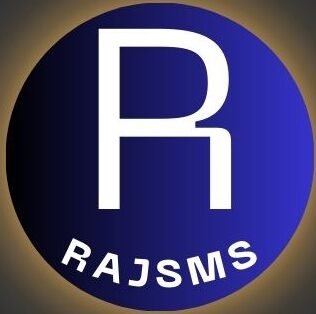1976 was a historic year for the United States as the nation commemorated its 200th anniversary of independence. To commemorate the unique event, the U.S. Mint produced the Bicentennial Quarter, which is now quite costly to purchase because of its scarcity.
Though the majority of Bicentennial quarters are still only worth the 25 cents that they cost originally, special quarters have brought up to $45,000 in an auction. If you possess a stash of old coins, now is the ideal moment to search for one of those special quarters.
The Birth of the Bicentennial Quarter
The U.S. Mint issued three special coins to mark this important period of 1776-1976:
- Quarter – 25 cents
- Half Dollar – 50 cents
- Dollar – $1
The quarter was designed by Jack L. Ahr. Its features are as follows:
- Obverse: Familiar portrait of George Washington.
- Reverse: A colonial-era drummer, above whom are a victory torch and 13 stars (symbolizing America’s first 13 colonies). – Dual Date: It reads 1776-1976, which refers to America’s independence and its bicentennial.
They were minted in Philadelphia (no mint mark), Denver (D) and San Francisco (S). In particular, the San Francisco Mint produced special quarters made of 40% silver, which are in great demand today.
What Makes Bicentennial Quarters So Valuable?

Although millions of Bicentennial quarters were made, some of these can be worth thousands and sometimes up to $45,000 for a number of reasons. Here are the factors:
| Factors | Description | Possible Value |
|---|---|---|
| Minting Errors | Rare Coins Due to Minting Errors | $2,880 to $25,000+ |
| Proof and Silver Editions | Special Shiny Proofs and 40% Silver Quarters | Up to $45,000 |
| Mint Mark Rarity | Coins struck at certain mints are more valuable | $8,000 to $10,000 |
| Condition and Grading | Higher quality coins are worth more | In the thousands of dollars |
1. Minting Errors
Unusual minting mistakes make some coins extremely rare. Some notable errors include:
- Double Die Obverse (DDO): When a design is printed twice, the letters on the coin appear double. A 1976-D Bicentennial quarter with this error sold for $25,000.
- Clipped Planchet: If the metal sheets were not cut correctly at the mint, the coin may be incomplete, and such coins can sell for up to $20,000.
- Off-Center Strike: If the coin is struck incorrectly, its rarity and value increases.
2. Proof and Silver Versions
Proof coins are made with special techniques, making them look more shiny and detailed. High-grade copies of the 1976-S Silver Proof Quarter have sold for up to $45,000.
3. Mint Mark Rarity
The mint mark on coins indicates where they were made. Bicentennial quarters with certain rare mint marks are more valuable:
- 1976-D (Denver Mint): Some coins have incorrect mint marks, which can sell for up to $8,000.
- 1976-S (San Francisco Mint): The Type 1 Proof version, which has a smaller date imprint, can sell for up to $10,000.
4. Coin Condition and Grading
The condition of coins plays a significant role in determining their value. They are graded from MS60 to MS70, where MS70 means “completely flawless”. Bicentennial quarters graded MS67 or higher can sell for thousands of dollars.
Some Notable High-Value Bicentennial Quarters
The following are some of the most expensive coins sold at auction:
- 1976-S Silver Bicentennial Quarter – Sold for $19,200.
- 1976-D Bicentennial Quarter with Die Cap Error – Sold at auction for $2,880.
How to Identify if You Have a Rare Bicentennial Quarter?
If you want to know if you have a valuable quarter, follow these steps:
Step 1: Check the Mint Mark
Look at the obverse of the coin (near the portrait of George Washington):
- No mint mark: Philadelphia Mint (most common coins).
- “D” mint mark: Denver Mint (some coins with errors may be valuable).
- “S” mint mark: San Francisco Mint (proof and silver versions are highly valued).
Step 2: Check for errors
Inspect the coin using a magnifying glass to see if it has a double die, off-center strike, or any other errors.
Step 3: Note the coin’s condition
If your coin looks like new, it may be beneficial to send it in for official grading.
Conclusion
The 1976 Bicentennial quarter is not just a representation of American history, but it can also be a treasure. If you possess a rare version, it may fetch thousands or even as much as $45,000. So, dig out your old coins—who knows, you may have a priceless treasure in there!
FAQs
Q1. How do I know if my Bicentennial Quarter is valuable?
Check for mint marks, errors like double die obverse, off-center strikes, or if it’s a silver proof version. Coins in uncirculated or high-grade condition are more valuable.
Q2. Where is the mint mark located on a Bicentennial Quarter?
The mint mark (D for Denver, S for San Francisco, or no mark for Philadelphia) is located on the obverse side, near George Washington’s ponytail.
Q3. Are all Bicentennial Quarters made of silver?
No, only the 1976-S quarters minted in San Francisco were made with 40% silver. Others are composed of copper-nickel.
Q4. What is the highest price a Bicentennial Quarter has sold for?
A rare 1976-S Silver Proof Quarter in pristine condition has sold for up to $45,000 at auction.
Q5. How can I sell a rare Bicentennial Quarter?
You can sell through online auction sites, coin dealers, or professional grading services like PCGS or NGC to get the best value.



